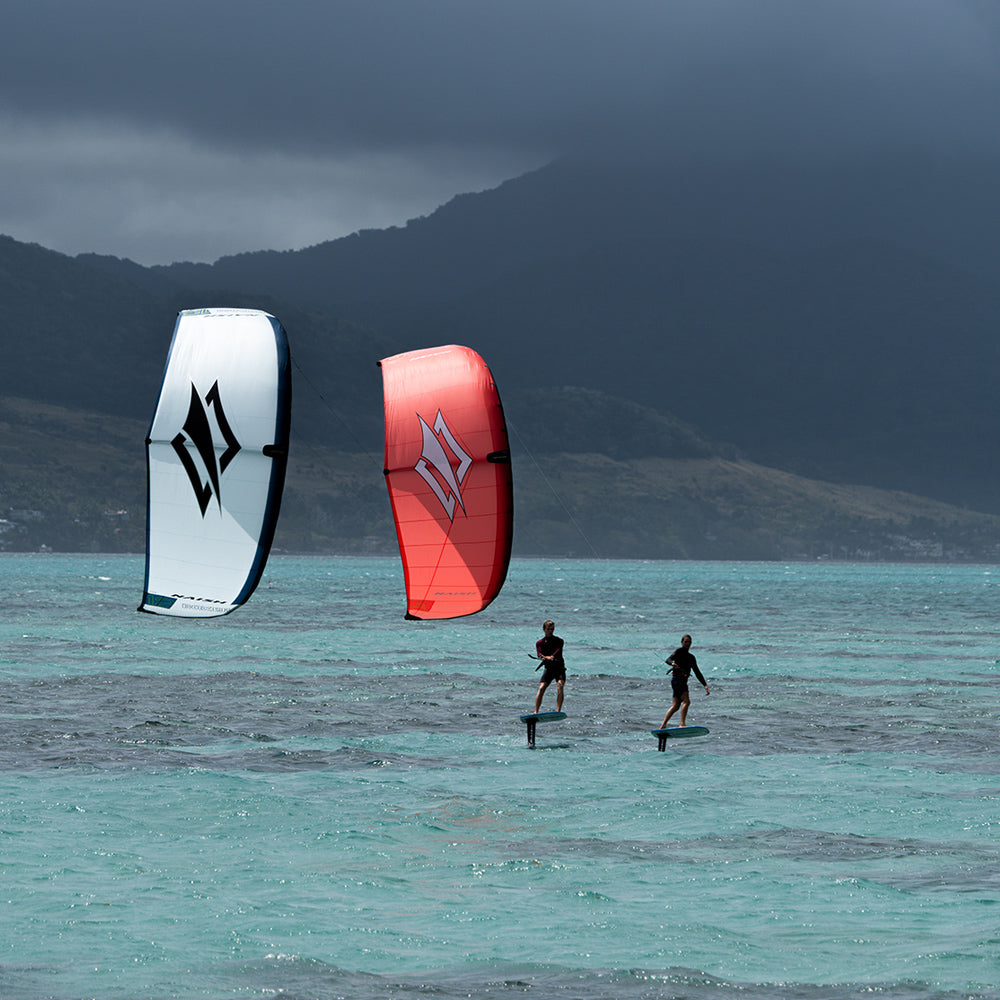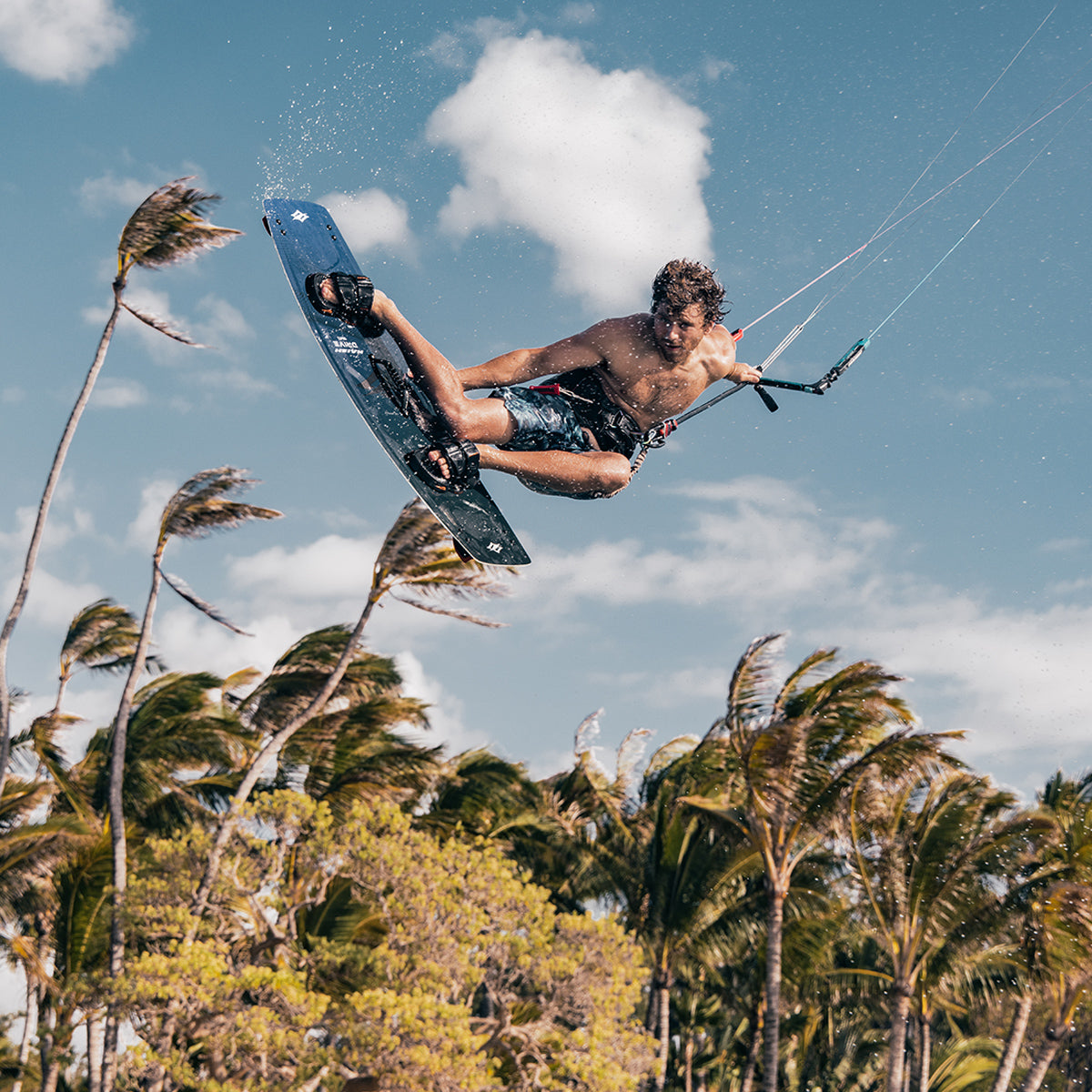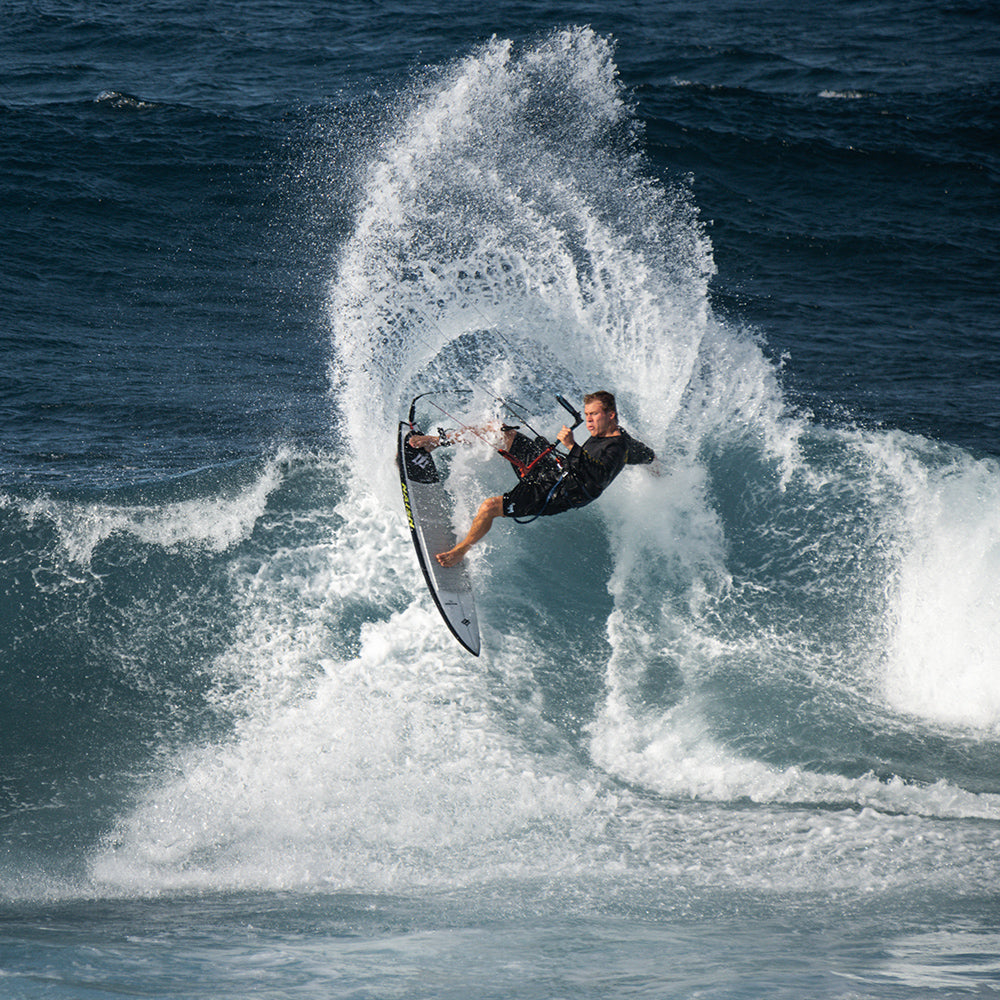
The Science Behind the Boxer: The Inside Scoop with Ewan Jaspan
The design choices driving faster response, seamless drift, and precision in light wind.
If there’s one kite in the Naish lineup designed to make light wind kitesurfing and kite-foiling feel intuitive, forgiving, and genuinely fun: it’s the Boxer. With the 2025 edition, Naish has taken a deep dive into what sets this single-strut icon apart, and pushed its performance even further. We sat down with head kite designer Ewan Jaspan to unpack the technical changes behind the latest Boxer and how they translate into real-world performance.
What were the biggest design changes in the Boxer 2025, and how do they improve light wind performance for foiling?
“One of the biggest updates is the lower aspect ratio. The kites get progressively far lower aspect the smaller they get, which lets the kite sit deeper in the wind window, which not only improves drift but delivers more consistent power. This is crucial for foiling where you're relying on every bit of energy to stay lifted. It also benefits the kite being able to turn on a dime, instead of driving through a turn, the kite can pivot on itself.
Add to that a new bridle setup, which offers better steering when the bar is out, plus more depower. That’s especially important in marginal wind. If you lose steering control with the bar out, the kite just drops. The Boxer now holds its position and feels a lot better in those moments.”
The kite’s bridle lines are also updated, opting for TLS 400, a slightly thinner, more aerodynamic version that helps in light wind by breaking through water surface tension more easily during relaunch.
Another key innovation: the Profile Lock Seam. This structural reinforcement improves the Boxer’s long-term shape retention. For a single-strut kite, which lacks the additional rigidity of multi-strut designs, this addition keeps the canopy crisp and performing like new, session after session.
How does all of that change the feel of the kite on water?
“You get a kite that’s more predictable, has a larger wind range, and steers better with lighter bar pressure. The low aspect improves relaunch and gives the kite that smooth, consistent tension that foilers need. You’re often riding toward the kite when jibing or tacking, so it has to stay flying even with little line tension.”
What about the Luff Strut? You’ve mentioned it helps the kite breathe better.
“It does. The Luff Strut allows the canopy to expand and contract naturally with the wind, which means the Boxer can morph to the conditions, especially in super light wind. That’s where you get both low-end grunt and seamless drift.”
The Boxer’s known for its drift. Would you still say “effortless drift”?
“I wouldn’t say effortless – drift doesn’t require effort in the first place. It’s more like seamless or consistent drift.
What makes it work? A deep draft, which stops the kite from front stalling. The pulley system keeps the kite constantly adjusting its position, so there’s always steering, even in slack moments. Add in the Luff Strut and lightweight frame, and you’ve got a kite that genuinely wants to stay in the sky.
Most kites flutter and dive when people try to jibe in light wind. The Boxer keeps flying; it maintains tension, steers cleanly, and forgives mistakes. That’s what makes it so special for foilers and beginner wavers alike.”

Let’s talk about Swift Tips and canopy materials… How do they help?
“Swift Tips reduce the swing weight, which makes the kite faster to turn and more responsive. Then there’s Quad Tex, which uses four yarns per direction. It’s super rigid and mimics the support you’d usually only get with multiple struts. This helps the Boxer hold its shape, steer tighter, and even jump better, and yes, even on a one-strut.”
How does the Boxer stay so stable in gusty or shifting wind?
“It’s that full system again: aerodynamic bridles, Luff Strut, and ultra-light construction. It all contributes to a kite that flies consistently, even when the conditions don’t.”
So, Who It’s For?
“The Boxer is made for foilers first. But it’s also killer for light wind wave riders and twin tippers who want to cruise around. If you’re a twin tip rider looking for light wind boosting power, the Pivot 14 or 17 might be better. For dedicated wave-specific needs, check the Triad.”
Ewan’s Take
“Honestly, I don’t want a three-strut kite when I foil, it’s too heavy. The Boxer won’t fall out of the sky, relaunches easily, and has probably the fastest turning in the Naish range.
You can get it in small sizes like 2.8 , 3.4, or 4 meters, great for kids or high wind foiling. It’s super forgiving, with soft pull in the turns, a light bar feel, and precise feedback. Even when you mess up, it gives you time to recover.”
Whether you’re a seasoned foil junkie or just getting your wings under you, the Boxer has been designed to keep you kiting, even in the marginal. More drift, more control, more margin for error. In a sport where a second too slow can mean a kite in the drink, that matters.
The Boxer doesn’t panic. It just flies.


